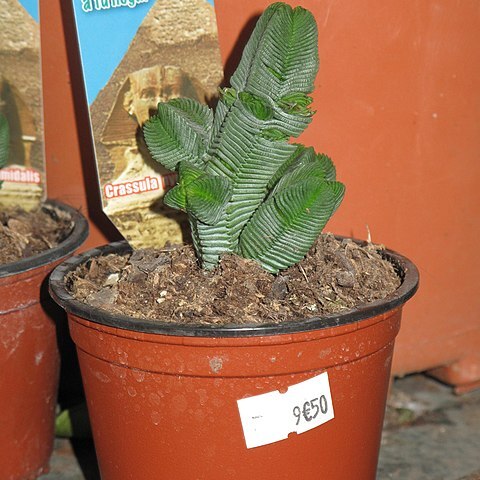Perennial herb, succulent, erect, branches or unbranched, 0.03-0.25 m high. Leaves angular-ovate, transversely depressed-ovate, 4-12 x 4-8 mm, of equal length, acute, dorsiventrally flattened without cilia, grey-green to brown. Inflorescence a terminal, cymose capitulum on main and lateral branches, partly hidden by upper leaves; flowers sessile. Calyx fleshy and green above, membranous and yellow below, marginal cilia. Corolla slender ampulliform, fused 3-4 mm, white tinged red; lobes narrowly elliptic-oblong, 8-11 mm long, terminal beak blunt. Flowering time Aug.-Oct.
Occasionally branched perennial, 30-250 mm tall. Leaves very densely packed, sessile, ovate-triangular, dorsiventrally flattened and leathery, 4-12 x 4-8 mm, margins smooth. Flowers in a dense, terminal, rounded head, ± embedded among leaves, flask-shaped, petals 8-11 mm long, fused in lower 3-4 mm, white, often tinged red.
Erect or sprawling perennial to 25 cm. Leaves opposite, angular-ovate, closely imbricate, forming 4-angled columns. Flowers in crowded, terminal heads, tubular, white or cream-coloured, petals 8-11 mm long.

